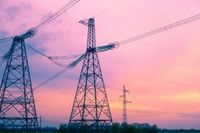Just a decade ago, the thought of electric vehicles (EVs) dominating the open road felt like wishful thinking. Today, however, the landscape is transforming at breakneck speed. On August 28, 2025, two major articles—one from a leading automotive magazine and another from Quartz—painted a vivid picture of how both automakers and the electric grid are racing to make the EV revolution not just possible, but exhilarating.
Let’s face it: electric cars used to have a reputation. They were often seen as glorified golf carts or tech bro playthings, lacking the soul and excitement that made driving fun. But as one automotive journalist confessed, “I used to be an electric car hater.” That’s changed, big time. Now, EVs are shattering performance records, redefining luxury, and—thanks to a wave of grid innovations—are poised to become as commonplace as their gas-powered ancestors.
Consider the Tesla Model S Plaid. According to the August 28 review, this family sedan “has grown tired of being sensible and decided to moonlight as a supercar killer.” With a jaw-dropping 1,020 horsepower and a 0–60 mph sprint in under two seconds, it’s not just keeping up with gasoline legends—it’s lapping them. Its range exceeds 390 miles, and Tesla’s Superchargers can add 200 miles in just 15 minutes. That’s enough time for a coffee break (though the writer jokingly warns against the Tesla Café’s brew).
But Tesla isn’t alone. The Lucid Air Grand Touring is stretching the limits of what’s possible, boasting 819 horsepower and a record-setting 516-mile range. It can recharge 300 miles in just 20 minutes. “You can cruise from San Francisco to San Diego without stopping,” the reviewer marvels. This isn’t just about speed; it’s about changing the way we travel. The Lucid’s cabin, with its glass canopy roof and sustainable luxury, feels more like a high-end lounge than a cockpit.
Performance purists haven’t been left behind. The Porsche Taycan Turbo S, with its 750 horsepower and 0–60 time of 2.6 seconds, is “basically a 911 Turbo with a plug.” Its 800-volt architecture means it charges 60 miles in five minutes—just enough for one more spirited run. And for those who want a touch of understated class, the Audi RS e-tron GT, built on the same platform, delivers 637 horsepower and a 0–60 in 3.1 seconds, all wrapped in a package that whispers luxury instead of shouting it.
Then there’s the Rimac Nevera—a Croatian-built hypercar that almost defies belief. With 1,914 horsepower, a 0–60 time of 1.74 seconds, and over 20 official performance records (including a quarter-mile in 8.25 seconds), it’s rewriting the supercar rulebook. Only 150 units will be built, making it rarer than a unicorn sighting. As the reviewer put it, “the Nevera exists to prove what electricity can do when you unleash it completely.”
Luxury has also found its place in the EV world. The Mercedes-Benz EQS 580 4MATIC isn’t about racing—it’s about redefining comfort. With 516 horsepower, a 0–60 in 4.1 seconds, and a 350-mile range, it’s the future of serene commuting. Its 56-inch MBUX Hyperscreen dashboard, massaging seats, and whisper-quiet ride make traffic almost enjoyable. Meanwhile, the BMW iX M60 brings “M-level insanity” to the SUV segment, delivering 610 horsepower and a 0–60 in 3.6 seconds—proving that family haulers can be thrilling, too.
All of this performance and luxury, though, would be little more than a science project if not for the quiet revolution happening on the electric grid. As Quartz reported on August 28, 2025, a host of innovations are making it possible for these EVs to hit the road—and stay there.
One standout is vehicle-to-grid (V2G) charging technology. This clever system allows EVs to feed stored energy back into the grid during peak demand, providing immediate support and even financial rewards for owners. It’s a win-win: the grid gets backup power, and drivers get a little extra cash in their pockets.
Smart sensors are also playing a crucial role. LEM’s RCM type B leak detection sensors can be installed on older transformers, helping prevent electricity waste and making the existing grid more efficient while utilities strategize upgrades. “They’re easy to install and able to make older transformers work efficiently while local teams strategize their replacements,” Quartz noted.
Surge alert devices, using Internet of Things (IoT) technology, are another piece of the puzzle. These sensors can predict power surges and communicate with EVs and smart devices, prompting them to temporarily reduce consumption and prevent overloads. It’s a bit like having a traffic cop for electricity, ensuring that everyone gets what they need without causing a jam.
Renewable energy integration is also accelerating the EV revolution. Two-way connections between sustainable energy sources and the grid mean that when the sun shines or the wind blows, that electricity can flow back to power plants, reducing the need for traditional generation. Berkeley Lab research cited by Quartz suggests that existing green storage and generation technology could meet 80% of the country’s electricity demand—a staggering figure that points to a cleaner, more resilient future.
Other grid upgrades are happening behind the scenes. Smart grid valves like SmartValve technology are being trialed to expand capacity. Central Hudson Gas & Electric in New York, for instance, used these sensors to produce 185 megawatts of extra power during a deployment. And self-healing transmission lines, tested by Duke Energy in North Carolina, can reroute electricity around damaged sections, restoring service faster and making the grid more robust in the face of storms and outages.
Of course, none of this happens overnight. Upgrading transformers, coordinating between private businesses and government agencies, and deploying new technology all take time. But the momentum is undeniable. As the Quartz article put it, “creative minds are busy dreaming of ways to empower the national grid.” And those dreams are turning into reality, one innovation at a time.
So, where does this leave drivers—and the planet? The EVs of 2025 aren’t just functional, they’re thrilling, luxurious, and practical. They offer record-shattering acceleration, cross-country range, and the kind of comfort that makes every commute feel like first class. And thanks to a smarter, more resilient grid, plugging in is easier and more sustainable than ever.
It’s no longer a question of if electric cars will take over—it’s a question of which one you’ll choose. Will you opt for the rocket ship, the luxury lounge, the Autobahn stormer, or the SUV with sports car DNA? The silent revolution is here, and it’s humming—not rumbling—into a new era of driving.




